Hi, Cyprien from FEAforall here. In this video, I decided to review an engineering book.
This is a book about thermal computation for electronics. So here it is. By Gordon N. Ellison. It’s a very interesting book that I’ve been reading in the past month about how to understand the theory and the practice behind computation of heat, cooling and all the kind of thermal behavior that you can expect when you’re working with electronic equipment.
Here’s the review in video:
You can get this book on the Publisher Website:
I’ve been amazed with the content of this book, which goes from the basics and teach you the basics principle of heat and thermal, but also give you very practical examples, which really give you a sense of how this works.
I’ve been through all the chapters one by one, and I hope that this book can be really useful for some of you, especially if you’re interested in looking at cooling. And there are some great knowledge too, to gain from this book, especially if you want to understand not only how to simulate that, but also how to understand the physics behind it in the more natural manner, lets say without necessarily having to compute everything on the computer first.
You can use thermal networks theory, or you can use various things like that, that can help you to get an idea of the temperature into your system without having to compute everything first. And, I think this really helps for engineers who works with thermal.
So let’s have a look at what’s inside the book chapter by chapter, and I’ll tell you some of the things that I thought were good about the book and some of the things that were maybe less good. So let’s go over that.
So here it is, Thermal Computations for Electronics by Gordon N. Ellison, Conductive, Radiated, and Convective Air Cooling. So, let’s have a look at what’s inside this book.
Let’s have a first at the table of contents, which is always very important to have look:
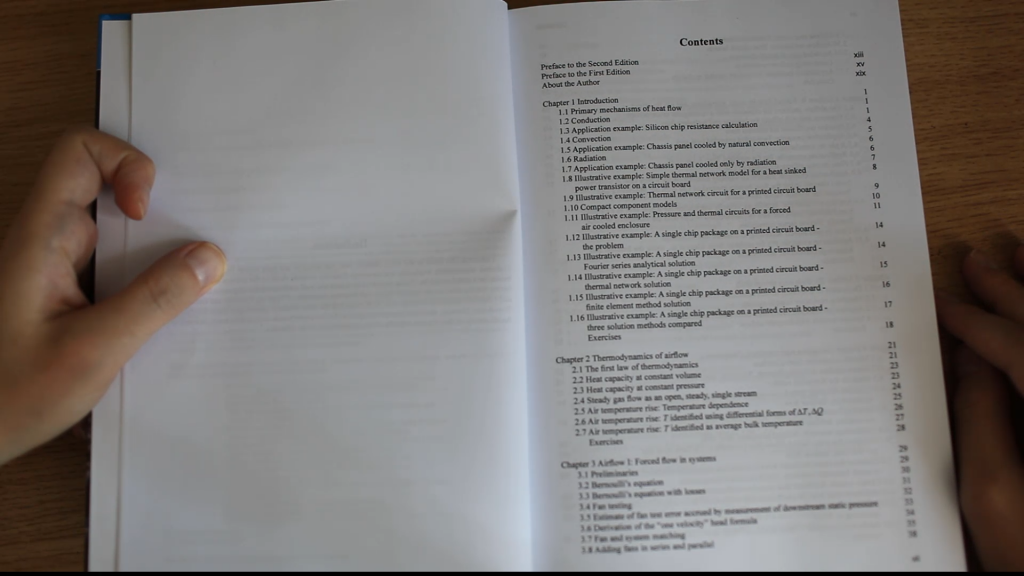
So you see that there’s big introduction about the mechanisms of heat flow. So conduction, convection, radiation. So it tells you the basic equations and those are really the most basic things you have to understand first. And then it goes with a bunch of examples to basically apply what’s inside this chapter. I liked this chapter cause it’s really practical. So, I’ll have a look afterwards, I will not review all the chapters of course, cause this book is like… It’s huge, more than 500 pages.
So then when you go over the introduction, it already gives you a sense of what will be inside this book. And there are some nice explanation about what is the thermal network solution. Some solution you can use for finite element method and when you actually need it. There are a lot of interesting things on that.
Then you go on the thermal dynamics of airflow, which basically goes over the flow of heat and it’s more from the fluid perspective. So it goes over the thermodynamics equation and how heat is computed and calculated for, in terms of air flows. And then it has a description about forced to flows and systems, which includes fans and all the equation you need for that. So this is a part that I actually, I was very interested to know about this. I’m not so much a specialist into fan calculation and the design of fans and all of this. This is pretty interesting stuff.
Then they you have forced flow in ducts, extrusion and pin fin arrays. A lot more examples, but for different types of applications, which go more in depth on the force flow. Then it talks about the buoyancy-driven draft. So, it’s basically the kind of heat cooling, which is driven by the buoyancy effect. So you can also learn into it, what is the buoyancy effect. So there’s a lot of that.
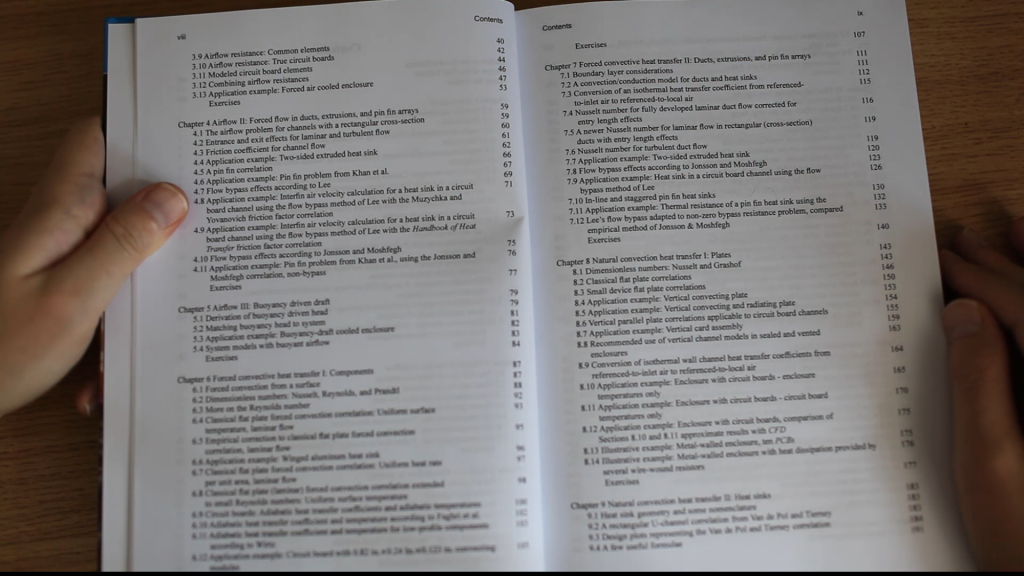
And then it goes to force convective heat transfer, again in different kind of components. It talks about the dimensionless numbers; Nusselt, Reynolds, Prandtl. All this. And then it talks about the same but in ducts, extrusion, pin fin rays. And when this is over about force conduction. So you see that you have already more than a hundred pages talking about force conduction and convection. So really important to have this kind of knowledge.
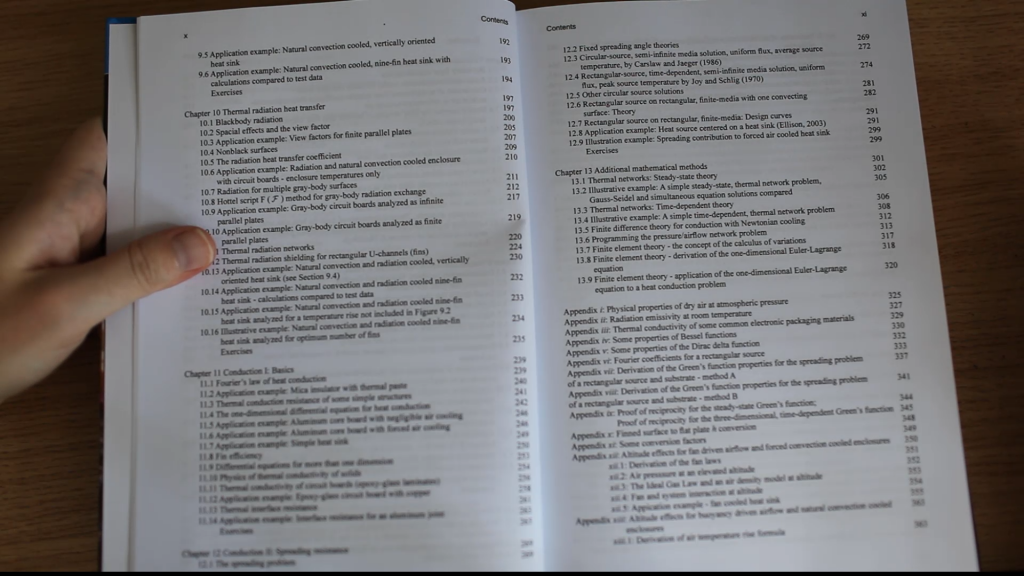
And then it talks about natural convection. Which is sometimes a bit more tricky. And you have also different kinds of systems of plates, heat sinks, and then talks about radiation. And there are two chapters about conduction and finally there are some more advanced stuff at the end about the additional mathematical methods that you can use and it includes some knowledge about finite element analysis models. It comes with some examples that have been built into open source FEA software, like Code Aster, for example. So that’s why it’s pretty interesting book.
So let’s dive quickly into the content of the book. I won’t go over everything cause it’s just impossible. So it goes over first some of the principle. And what I can say is that I like the fact that all the numerical applications that are putting two numbers right into the equations. So you see how it’s calculated and you have the direct results here.
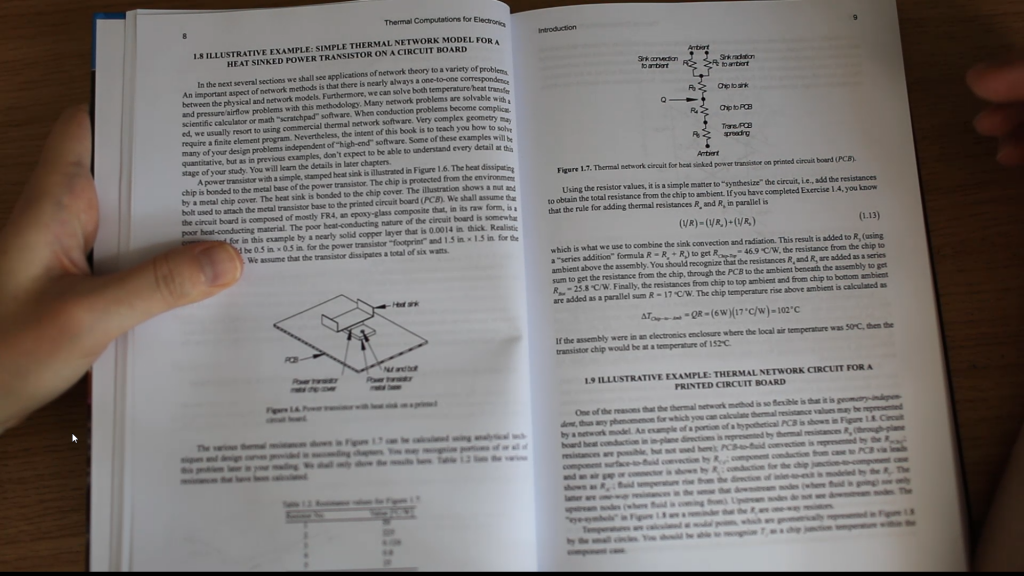
So it’s pretty detailed, basically. It’s pretty detailed. And I like the way this is explained, it’s really explaining in understandable manner. So you should go over the text and you think about this equation and you try to calculate that, you really get a practical understanding of how cooling and heating actually works and calculated.

So this is for example, a simple thermal network model. And it just tells you that a simple PCB like that with a poor transistor, heat sink, some bolt. This can be split out in terms of thermal resistance. And then you can draw some kind of simple scheme like this. And when you know where the heat transfer flow is coming in, you can calculate basically the heat at different points of this structure. So of course this is simplification. You only get an idea of the heat, not exactly the temperature at each point for which you would require to use FEA, but this in some systems it’s really a norm and you can generalize this CRA with more complex networks.
It talks about compact component models, for example. So how you would analyze the thermal circuit for forced air cooled enclosure, like this one. It looks like a pretty complex model. If you had to do that with FEA, this would take a lot of hours to model every component inside the box and with all the bugs, it’s very difficult work. But if you follow, what is explained here and the way to calculate this kind of system, you understand that you can make each part of the system as a separate component with a certain thermal resistance. You can understand the flow of heat in which way basically it’s going, and you can get some calculation going on very quickly using such a method.
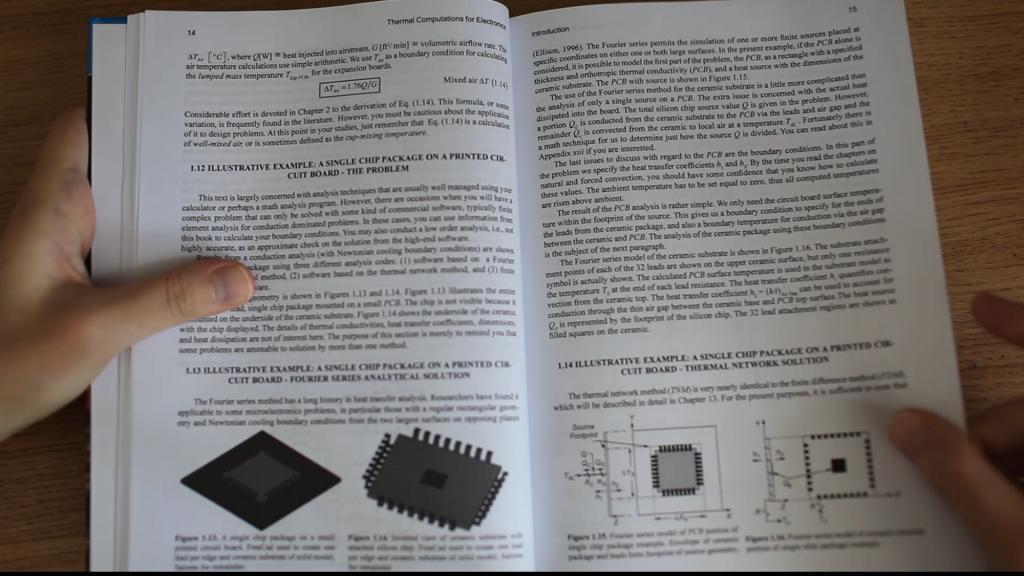
So I like this. And after that, it talks about FEA and how you can get more, detailed result at any point using FEA that gives you some simple examples. You have a lot of exercise as well.
I will not review everything because this is huge. This book is huge. But more you go into the book, more you’ll have details about air flows and calculation of fans. I didn’t read everything yet because it’s really packed with knowledge, but I went through some of the most important and interesting things that I thought were really cool. And I’m sure that I’ll be using some of those for the blog, to show some practical examples and maybe show you how to calculate that with Code Aster, or I’ll definitely take some example from this book.
So this is a very good book and I really recommend you to get it and to try… If you are interested into this kind of electronic calculation.
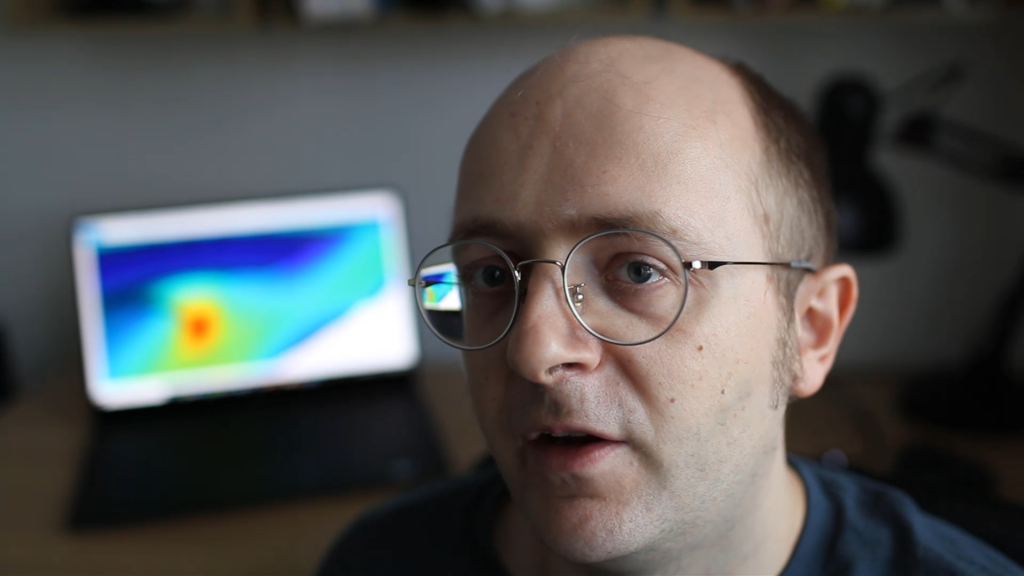
So I was telling you, I would also talk about the negative points about this book. They aren’t much negative things about this book to be frank. There is only one thing which is a bit annoying for me, being an European, is that this book is targeted for the US market. So all the numerical application in the book are in metric units. And basically sometimes I have to do the conversion and the other units to kind of makes it relate more to my own kind of calculations. But I think this is a natural thing for engineers to convert from one type of units to the other. And it’s not too much big of a hassle, as what is important is really to understand how it works and numerical application you can always change the unit and get the results.
That was really the only point that I found was a bit annoying. The rest was really good. So this book will definitely be in my library and, to be frank I have a lot of engineering books in my home because my philosophy is that if I can find only one or two things which are really interesting in an engineering book, I just buy it because I kind of accumulate this kind of good solid engineering resources that you cannot find on the internet or on websites. Whenever I have a problem, I just go back to the books. I know which will give me this kind of knowledge.
So that’s all for this video.
I hope this was useful.
And that if you have any question, any comment, as usual just leave it under the video and let me know, by the way, if you like this kind of book review type of videos I can do for other books as well.

This is the first thing I’m doing this kind of thing. So I was thinking, it might be useful, it might be interesting. So if you do think this is good, let me know. That’s all. So thank you again and goodbye.
Hi Cyprien,
I enjoyed your recent blog/video regards the review on the book about thermal computation.
In the blog, you mentioned that you have, over the years, collected a library of useful engineering references, and I was wondering if you would be able to publish a list of the books in your library for others to use as a reference guide.
Best Regards,
Daryn
Nice content. Thank you.